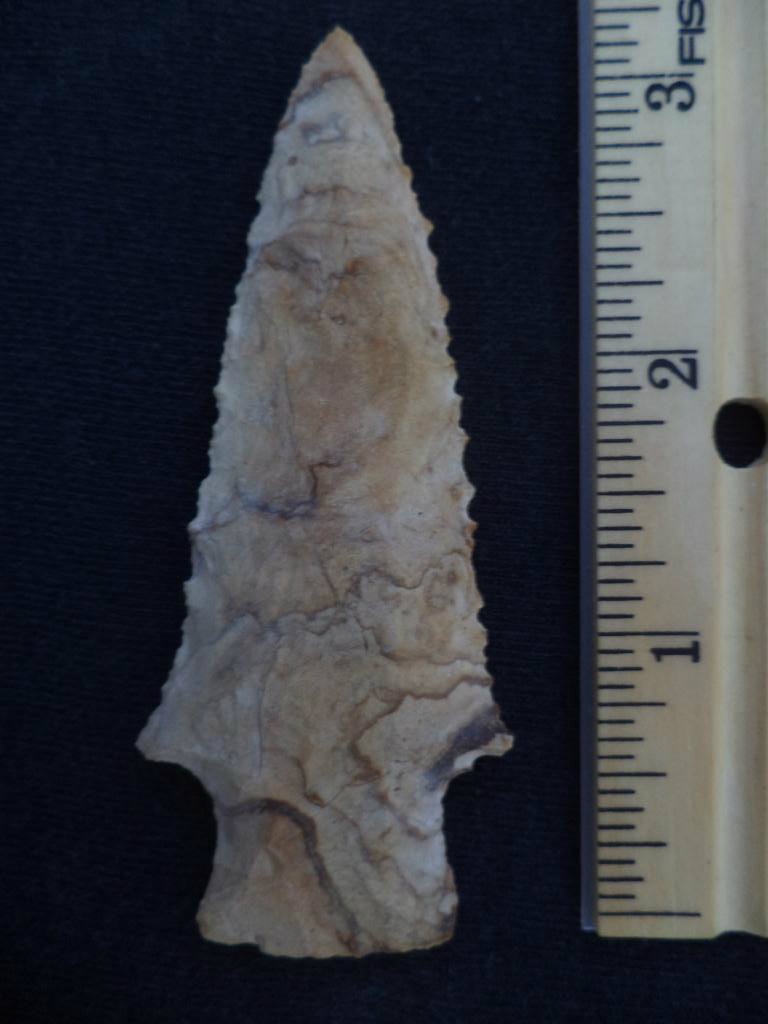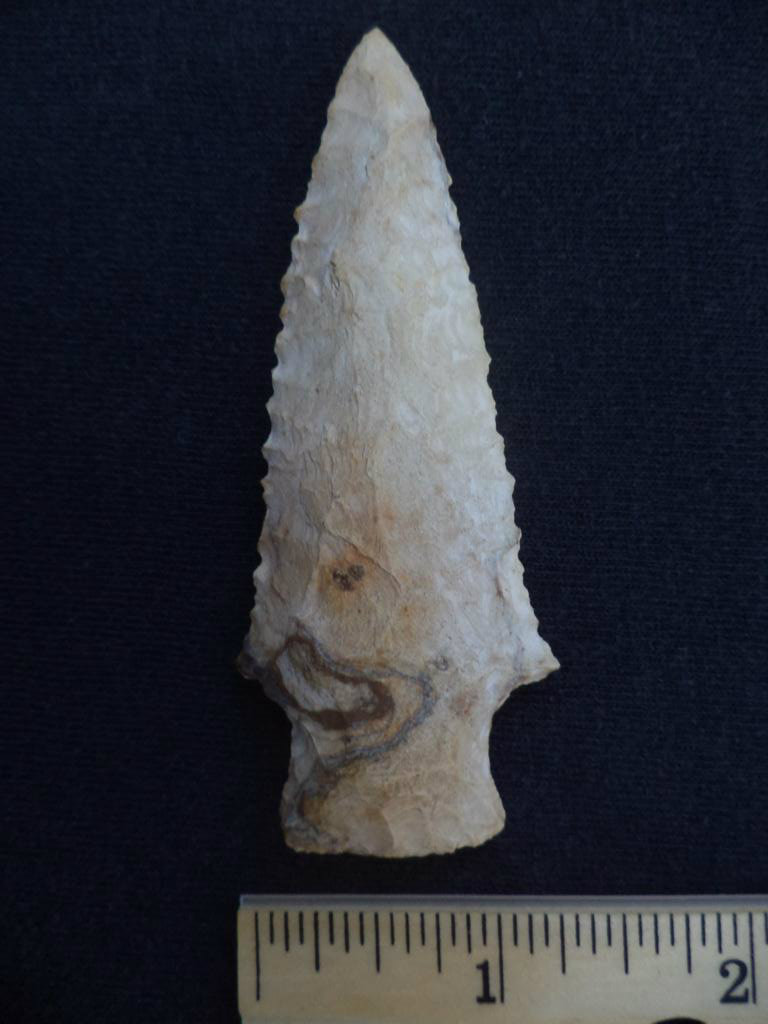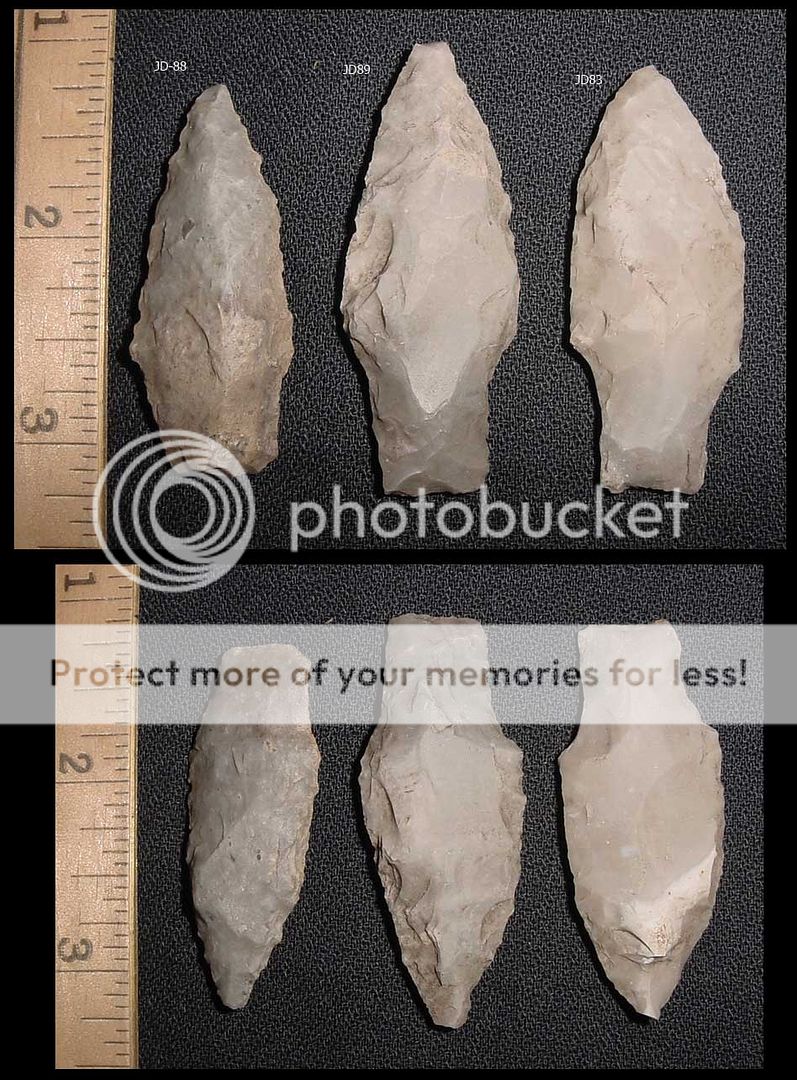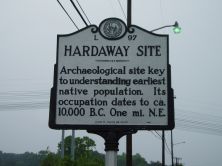It looks like you're using an Ad Blocker.
Please white-list or disable AboveTopSecret.com in your ad-blocking tool.
Thank you.
Some features of ATS will be disabled while you continue to use an ad-blocker.
share:
Forgot to add this,and if you read the link,those good ol' boys have a barbeque.
allendale-expedition.net...
Topper Site - Allendale County South Carolina Radiocarbon tests of carbonized plant remains where artifacts were unearthed last May along the Savannah River in Allendale County by University of South Carolina archaeologist Dr. Albert Goodyear indicate that the sediments containing these artifacts are at least 50,000 years old, meaning that humans inhabited North American long before the last ice age. The findings are significant because they suggest that humans inhabited North America well before the last ice age more than 20,000 years ago, a potentially explosive revelation in American archaeology. Goodyear, who has garnered international attention for his discoveries of tools that pre-date what is believed to be humans’ arrival in North America, announced the test results, which were done by the University of California at Irvine Laboratory, Wednesday (Nov .17). “The dates could actually be older,” Goodyear says. “Fifty-thousand should be a minimum age since there may be little detectable activity left.” The dawn of modern homo sapiens occurred in Africa between 60,000 and 80,000 years ago. Evidence of modern man’s migration out of the African continent has been documented in Australia and Central Asia at 50,000 years and in Europe at 40,000 years. The fact that humans could have been in North America at or near the same time is expected to spark debate among archaeologists worldwide, raising new questions on the origin and migration of the human species. “Topper is the oldest radiocarbon dated site in North America,” Goodyear says. “However, other early sites in Brazil and Chile, as well as a site in Oklahoma also suggest that humans were in the Western Hemisphere as early as 30,000 years ago to perhaps 60,000.”
allendale-expedition.net...
Originally posted by HomerinNC
While driving around today, I noticed a landmark sign that instantly grabbed my attention:
10,000 years BC!!!
This stunned and floored me, we have artifacts that predate modern civilization by about 4,000 years here in the USA, and in North Carolina no less!
Can I interest you in a paper listing the many pre Clovis sites in the US and the evidence involved?
Link
You'll find one, the Topper Site (a very famous one) near Allendale South Carolina.
Harte
EDIT - Ooops! I didn't see that last post. Oh well, the pdf I linked is a scholarly paper that gives the goods on a great many sites, along with Topper.
H
edit on 1/15/2013 by Harte because: (no reason given)
reply to post by Harte
My question is,why hasn't this been made mainstream,or is it because it's ongoing.
Your thoughts?
My question is,why hasn't this been made mainstream,or is it because it's ongoing.
Your thoughts?
Originally posted by HomerinNC
reply to post by Aleister
Hey how about posting a pic???
No pics from my computer, I've never learned how to do that. It's not a big hammer, more of a hand held, but it has the entire cut-around that the hammers and axes of that era have. I didn't find it though, have found none of my artifacts, picked them up in very reputable shows for good prices. Like many people I enjoy just having them and knowing that these things were made thousands of years ago (I almost always carry one or another "ancient" - don't tell that to people in Europe - American Indian knife points in my pocket, to cut boxes or whatever needs cutting).
edit on
15-1-2013 by Aleister because: (no reason given)
Originally posted by HomerinNC
we have a mound not too far from here, i'll be going to go check it out next time i get paid
Now these arent my folks, theyre in Montana and Canada.. but the state we were transferred to has a very unique site.. Cahokia Mounds. The history behind these is pretty amazing given the age and the "stone henge" type of pole structure. Its the largest pre-columbian structure north of Mexico.
If youre ever in the St Louis area.. I'll give you the grand tour.
www.cahokiamounds.org...
whc.unesco.org...
link is to an interactive map of many of them.
Harte
It's pure mainstream. Why do you think otherwise?
Albert Goodyear, the author of the paper I linked, has been digging there for decades. And publishing his results.
He had some trouble convincing his colleagues early on, mainly because of the lack of evidence. Have you seen the "artifacts" he's found?
Here's a link to a small gallery of pics: Gallery, that pic came from there.
The artifact shown is supposed to be a "blade," and maybe it is.
But it looks like it could be naturally broken stone as well.
At any rate, there's a large number of sites dated as PreClovis now. This link takes you to an interactive map of many of them.
Harte
Harte
Originally posted by kdog1982
reply to post by Harte
My question is,why hasn't this been made mainstream,or is it because it's ongoing.
Your thoughts?
It's pure mainstream. Why do you think otherwise?
Albert Goodyear, the author of the paper I linked, has been digging there for decades. And publishing his results.
He had some trouble convincing his colleagues early on, mainly because of the lack of evidence. Have you seen the "artifacts" he's found?
Here's a link to a small gallery of pics: Gallery, that pic came from there.
The artifact shown is supposed to be a "blade," and maybe it is.
But it looks like it could be naturally broken stone as well.
At any rate, there's a large number of sites dated as PreClovis now. This link takes you to an interactive map of many of them.
Harte
reply to post by Harte
Maybe because it hasn't come across my radar for along time till now and I haven't followed up on it.
I grew up about 60 miles from that site,but that was in the 70's.
Thank you for sharing those links.
K
It's pure mainstream. Why do you think otherwise?
Maybe because it hasn't come across my radar for along time till now and I haven't followed up on it.
I grew up about 60 miles from that site,but that was in the 70's.
Thank you for sharing those links.
K
edit on 15-1-2013 by kdog1982 because: (no reason given)
Originally posted by Advantage
Originally posted by HomerinNC
reply to post by blindIo
like I said, whats taught in schools is they migrated over from asia across the Bering Strait during the last ice age and went south, now its being found out they went from south to NORTH
Yes, a genius in chat informed me I am Asian last night among other idiotic and racist coments... regardless of all scientific evidence. Im Blackfeet.. Siksika.. and I do love it when things like this are posted. Im sick of ATSers telling me who I am, what I am, where Im from, and what I think because my parents happened to be born on a reservation.
Thanks Homer
More correctly northeast asians are descended from your ancestors. Your heritage goes back at least 50,000 years and likely is much older than that.
On my fathers side I'm part philipino and part mono Indian, what crazy is my philipino surname is taken from a tribe in Ecuador, that roughly translates to " those from Quito". So my philipino ancestors' ancestors, were essentially descended from the ancestors of my mono ancestors.
Originally posted by Harte
link is to an interactive map of many of them.
Harte
Originally posted by kdog1982
reply to post by Harte
My question is,why hasn't this been made mainstream,or is it because it's ongoing.
Your thoughts?
It's pure mainstream. Why do you think otherwise?
Albert Goodyear, the author of the paper I linked, has been digging there for decades. And publishing his results.
He had some trouble convincing his colleagues early on, mainly because of the lack of evidence. Have you seen the "artifacts" he's found?
Here's a link to a small gallery of pics: Gallery, that pic came from there.
The artifact shown is supposed to be a "blade," and maybe it is.
But it looks like it could be naturally broken stone as well.
At any rate, there's a large number of sites dated as PreClovis now. This link takes you to an interactive map of many of them.
Harte
Hi harte,
So do you think that is a naturaly fractured object.
I see orthaganol fracture zones, to me it clearly shows a non natural working of the stone.
Kind of like this object from the calico hills that was characterized as a natural formation.

Oops sorry dbl post
edit on 15-1-2013 by punkinworks10 because: double post
Nothing is set in stone (pun intended) with the history books, it's always changing.
That being said, your stance on the pyramids being older than determined has always rung a bell in my mind as well.
This is a fantastic find OP!
That being said, your stance on the pyramids being older than determined has always rung a bell in my mind as well.
This is a fantastic find OP!
reply to post by HomerinNC
Interesting that the Palmer, Guilford and Kirk points are in that picture. If they came from the same soil level that would probably indicate it was a trade region. I have a major beef about clovis points.. the way that so few artifact types are attributed to the paleolithic period is pretty stupid. Its saying that for thousands of years the ONLY thing those people had figured out how to craft were clovis points.. well Convingtons and a few others, all with concave bases, and very crude hand axes.
It didn't take thousands of years to realize that putting a stem on a point would tremendously help with the hafting.. CMON!!
Interesting that the Palmer, Guilford and Kirk points are in that picture. If they came from the same soil level that would probably indicate it was a trade region. I have a major beef about clovis points.. the way that so few artifact types are attributed to the paleolithic period is pretty stupid. Its saying that for thousands of years the ONLY thing those people had figured out how to craft were clovis points.. well Convingtons and a few others, all with concave bases, and very crude hand axes.
It didn't take thousands of years to realize that putting a stem on a point would tremendously help with the hafting.. CMON!!
edit on 16-1-2013 by 1/2 Nephilim because: (no reason given)
I sent my 11yr old out to clear some small shrubs/sapling trees near a grove and within 35 minutes she had gone from trying to pull them up, to
cracking a rock in half and using the sharp end of it to then wrapping it with some tall grass so she had a make shift handle.
You can't tell me an entire community that lived out doors and spent nearly their entire lives harvesting/building/trading could only manage to design one type of spear point after 3000 years of knowing how to chip and shape stone.
You can't tell me an entire community that lived out doors and spent nearly their entire lives harvesting/building/trading could only manage to design one type of spear point after 3000 years of knowing how to chip and shape stone.
edit on 16-1-2013 by vind21 because: (no reason
given)
Arizona has many sites older than 10,000 years. Several with human evidence mixed with mammoth remains. Check the links below...
"http://www.discoverseaz.com/History/PaleoInd.html"
"http://www.hmdb.org/marker.asp?marker=43633"
"http://www.argonaut.arizona.edu/history.htm"
Early man, back beyond 10,000 BC, is all around us, but as a previous submitter says, to acknowledge it would cost a lot of people their jobs!
"http://www.discoverseaz.com/History/PaleoInd.html"
"http://www.hmdb.org/marker.asp?marker=43633"
"http://www.argonaut.arizona.edu/history.htm"
Early man, back beyond 10,000 BC, is all around us, but as a previous submitter says, to acknowledge it would cost a lot of people their jobs!
reply to post by HomerinNC
wow very cool find. s&f
can't you try too make contact with that family that´s owns the place.
would be cool too see more pic from that place
wow very cool find. s&f
can't you try too make contact with that family that´s owns the place.
would be cool too see more pic from that place
Originally posted by punkinworks10
Originally posted by Harte
link is to an interactive map of many of them.
Harte
Originally posted by kdog1982
reply to post by Harte
My question is,why hasn't this been made mainstream,or is it because it's ongoing.
Your thoughts?
It's pure mainstream. Why do you think otherwise?
Albert Goodyear, the author of the paper I linked, has been digging there for decades. And publishing his results.
He had some trouble convincing his colleagues early on, mainly because of the lack of evidence. Have you seen the "artifacts" he's found?
Here's a link to a small gallery of pics: Gallery, that pic came from there.
The artifact shown is supposed to be a "blade," and maybe it is.
But it looks like it could be naturally broken stone as well.
At any rate, there's a large number of sites dated as PreClovis now. This link takes you to an interactive map of many of them.
Harte
Hi harte,
So do you think that is a naturaly fractured object.
I didn't say I thought that.
I said I thought that it looked like it could be natural.
Many artifacts that were first to be found at Topper were questioned in that way. Just trying to explain why, when Topper was first published, many of Goodyear's peers took some convincing.
Some still aren't completely convinced about that specific site, though the PreClovis culture is now fully mainstream, and many sites date far older than Topper and are accepted today.
Originally posted by punkinworks10
I see orthaganol fracture zones, to me it clearly shows a non natural working of the stone.
Kind of like this object from the calico hills that was characterized as a natural formation.
I have no problem taking your word for that. Especially since I fully believe that Goodyear is right about his site. If you look at some of the other artifacts, there are several that have been found that are unquestionably man-made.
Harte
reply to post by vind21
Thats cute, very good example. Your absolutely right, artifact typology is one of the most frustrating subjects I have ever tried to learn. Its amazing how much disdain collectors have for archeologists. Its because most of them are in it for money. They dig up burial mounds, they trespass, if an artifact doesn't have a noticeable patina they will actually touch-up knap it something more valueable. Peoples signatures on artifact boards say stuff like "Those aren't my footprints!" as a joke.
Ocmulgee, near where I'm from, was a central trading hub for thousands of years yet due to the fact artifacts are typed regionally if you find a western US type point they call it a Kirk because those type of points CANNOT be from this region. Heres an example, I found this point awhile back and argued until I was blue in the face that its not a Kirk-anything, not stemmed, not corner-notched. Its to long, to thin and has a convex base. Come to find out, ANY type of point that isn't known to be local is labeled as a Kirk... it is extremely frustrating. Heres the point (no pun intended), I challenge anyone to find a Kirk that resembles this.. they dont have convex bases.


Originally posted by vind21
I sent my 11yr old out to clear some small shrubs/sapling trees near a grove and within 35 minutes she had gone from trying to pull them up, to cracking a rock in half and using the sharp end of it to then wrapping it with some tall grass so she had a make shift handle.
You can't tell me an entire community that lived out doors and spent nearly their entire lives harvesting/building/trading could only manage to design one type of spear point after 3000 years of knowing how to chip and shape stone.
Thats cute, very good example. Your absolutely right, artifact typology is one of the most frustrating subjects I have ever tried to learn. Its amazing how much disdain collectors have for archeologists. Its because most of them are in it for money. They dig up burial mounds, they trespass, if an artifact doesn't have a noticeable patina they will actually touch-up knap it something more valueable. Peoples signatures on artifact boards say stuff like "Those aren't my footprints!" as a joke.
Ocmulgee, near where I'm from, was a central trading hub for thousands of years yet due to the fact artifacts are typed regionally if you find a western US type point they call it a Kirk because those type of points CANNOT be from this region. Heres an example, I found this point awhile back and argued until I was blue in the face that its not a Kirk-anything, not stemmed, not corner-notched. Its to long, to thin and has a convex base. Come to find out, ANY type of point that isn't known to be local is labeled as a Kirk... it is extremely frustrating. Heres the point (no pun intended), I challenge anyone to find a Kirk that resembles this.. they dont have convex bases.


Originally posted by 1/2 Nephilim
reply to post by vind21
Originally posted by vind21
I sent my 11yr old out to clear some small shrubs/sapling trees near a grove and within 35 minutes she had gone from trying to pull them up, to cracking a rock in half and using the sharp end of it to then wrapping it with some tall grass so she had a make shift handle.
You can't tell me an entire community that lived out doors and spent nearly their entire lives harvesting/building/trading could only manage to design one type of spear point after 3000 years of knowing how to chip and shape stone.
Thats cute, very good example. Your absolutely right, artifact typology is one of the most frustrating subjects I have ever tried to learn. Its amazing how much disdain collectors have for archeologists. Its because most of them are in it for money. They dig up burial mounds, they trespass, if an artifact doesn't have a noticeable patina they will actually touch-up knap it something more valueable. Peoples signatures on artifact boards say stuff like "Those aren't my footprints!" as a joke.
Ocmulgee, near where I'm from, was a central trading hub for thousands of years yet due to the fact artifacts are typed regionally if you find a western US type point they call it a Kirk because those type of points CANNOT be from this region. Heres an example, I found this point awhile back and argued until I was blue in the face that its not a Kirk-anything, not stemmed, not corner-notched. Its to long, to thin and has a convex base. Come to find out, ANY type of point that isn't known to be local is labeled as a Kirk... it is extremely frustrating. Heres the point (no pun intended), I challenge anyone to find a Kirk that resembles this.. they dont have convex bases.
Where did you find those points,
Those are western stemmed points
Like these that were found in cali.

reply to post by Harte
Hi harte,
Thanks for the reply ,
I was asking about your opinon on that on that piece, because I actually respect your opinion.
As the dates get pushed back ever farther there are some sites that were discredited in the past, now need a serious re examination.
Speaking of topper it has provided the best evidence for the " Clovis impact",
www.sciencedaily.com...
Hi harte,
Thanks for the reply ,
I was asking about your opinon on that on that piece, because I actually respect your opinion.
As the dates get pushed back ever farther there are some sites that were discredited in the past, now need a serious re examination.
Speaking of topper it has provided the best evidence for the " Clovis impact",
"What we had at Topper and nowhere else were pieces of manufacturing debris from stone tool making by the Clovis people. Topper was an active and ancient quarry at the time," LeCompte said. "Al Goodyear was instrumental in our approach to getting samples at Topper." Goodyear showed LeCompte where the Clovis level was in order to accurately guide his sampling of sediments for the Younger Dryas Boundary layer. He advised him to sample around Clovis artifacts and then to carefully lift them to test the sediment directly underneath. "If debris was raining down from the atmosphere, the artifacts should have acted as a shield preventing spherules from accumulating in the layer underneath. It turns out it really worked!" Goodyear said. "There were up to 30 times more spherules at and just above the Clovis surface than beneath the artifacts." LeCompte said the finding is "critical and what makes the paper and study so exciting. The other sites didn't have artifacts because they weren't tool-making quarries like Topper.
www.sciencedaily.com...
new topics
-
Speaking of Pandemics
General Conspiracies: 1 hours ago -
Stuck Farmer And His Queue Jumping Spawn
Rant: 1 hours ago -
Paradox of Progress
Ancient & Lost Civilizations: 9 hours ago
top topics
-
Joe Biden gives the USA's Highest Civilian Honor Award to Hillary Clinton and George Soros.
US Political Madness: 12 hours ago, 13 flags -
Winter Storm
Fragile Earth: 12 hours ago, 7 flags -
A great artist and storyteller, for kids of all ages
General Entertainment: 15 hours ago, 6 flags -
Paradox of Progress
Ancient & Lost Civilizations: 9 hours ago, 6 flags -
Biden Face Planted Somewhere
Politicians & People: 14 hours ago, 5 flags -
Stuck Farmer And His Queue Jumping Spawn
Rant: 1 hours ago, 2 flags -
Speaking of Pandemics
General Conspiracies: 1 hours ago, 0 flags
active topics
-
Speaking of Pandemics
General Conspiracies • 3 • : billxam1 -
What Is 'Quad Demic'? Mask Mandate Returns In These US States
Diseases and Pandemics • 31 • : billxam1 -
Stuck Farmer And His Queue Jumping Spawn
Rant • 2 • : billxam1 -
The theory that COVID-19 originated in China takes a body blow.
Diseases and Pandemics • 57 • : Lazy88 -
FIEND SLASHED: Sara Sharif’s killer dad ‘has neck & face sliced open with jagged tuna tin lid
Mainstream News • 21 • : Asktheanimals -
Post A Funny (T&C Friendly) Pic Part IV: The LOL awakens!
General Chit Chat • 7989 • : Flyingclaydisk -
A great artist and storyteller, for kids of all ages
General Entertainment • 2 • : Asktheanimals -
Nigel Farage's New Year Message.
Politicians & People • 21 • : gortex -
The Future of fashion .
Social Issues and Civil Unrest • 20 • : Flyingclaydisk -
NJ Drones tied to Tesla explosion at Trump Las vegas
General Conspiracies • 46 • : Flyingclaydisk

